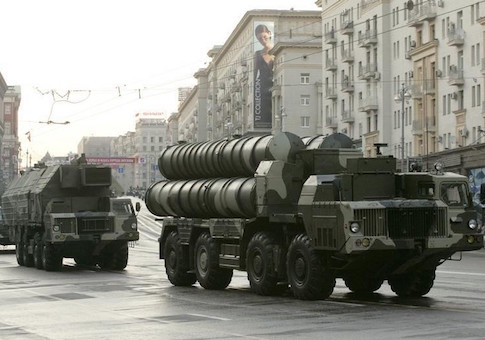DUBAI (Reuters) - Iran will sign a contract with Russia next week to buy four S-300 surface-to-air missile systems, the Iranian defense minister said on Tuesday, bringing Tehran closer to acquiring an advanced air defense capability.
Russian state arms producer Almaz-Antey in June said it would supply Iran with a modernized version of the S-300, among the world's most capable air defense systems, once a commercial agreement was reached.
"The text of the contract is ready and our friends will go to Russia next week to sign the contract," Defense Minister Hossein Dehghan was quoted as saying by the Fars news agency.
Russia says it canceled a contract to deliver S-300s to Iran in 2010 under pressure from the West. But President Vladimir Putin lifted that self-imposed ban in April following an interim nuclear deal between Iran and world powers.
Tuesday's announcement came a day after Iran's Foreign Minister Mohammad Javad Zarif visited Moscow to discuss the civil war in Syria, in which Tehran and Moscow support President Bashar al-Assad. Western powers and most Arab countries have called for Assad to resign as part of a peace deal.
Israeli Prime Minister Benjamin Netanyahu, one of the most vocal critics of last month's final nuclear deal between Iran and world powers, has expressed Israel's "dismay" at Russia's decision to supply the S-300s to Tehran.
Dehghan said Iran had initially planned to acquire three "battalions" of S-300 launchers, but had since increased its order to four.
He did not specify how many missile launchers would be in each battalion, a standard military grouping whose size can vary depending on nationality, equipment and role.
Pieter Wezeman, an arms expert at the Stockholm International Peace Research Institute, said each battalion was likely to be an independent unit comprising a radar system, control system, and an unknown number of launchers.
"With four battalions, they should be able to deploy missile systems in four different locations," he said.
The S-300, first deployed at the height of the Cold War in 1979, can engage multiple aircraft and ballistic missiles up to 300 km (186 miles) away.
Dehghan also said Iran was negotiating with Russia to buy fighter jets, in a likely attempt to upgrade its aging fleet of mostly U.S.-made jets for which it cannot obtain spare parts or upgrades due to long-standing hostility between the two countries. He did not provide further details.
(Reporting by Sam Wilkin; Editing by Raissa Kasolowsky)
